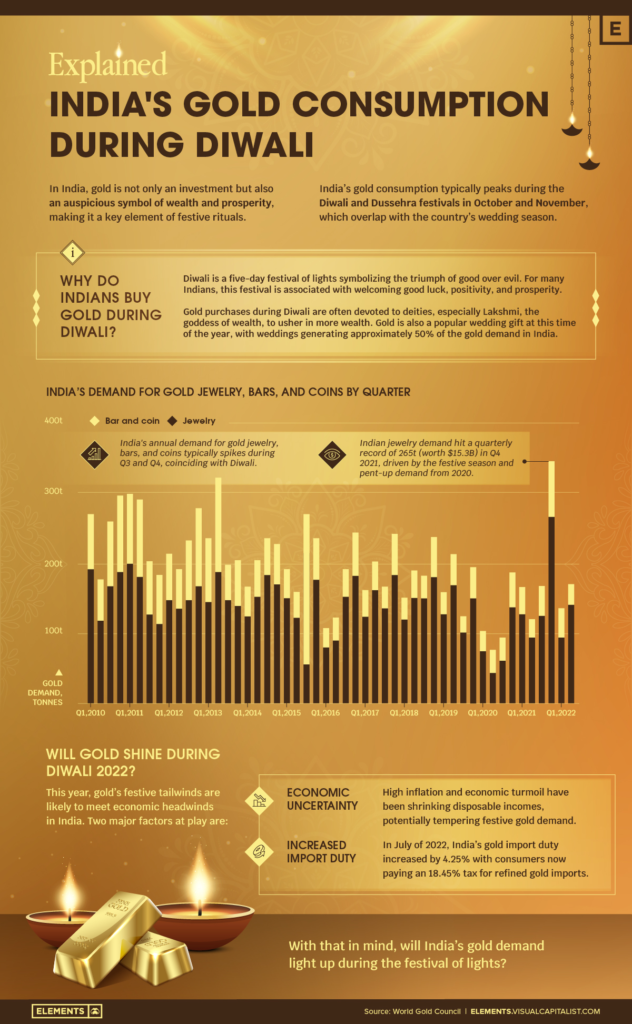Explained: India’s gold demand during Diwali

India’s gold demand during Diwali
In India, gold’s significance goes far beyond investment and jewelry. The yellow metal is woven into India’s cultural history and is revered by a population of over 1.3 billion.
India is one of the largest markets for gold consumption, with jewelry, bars, and coins accounting for the bulk of annual demand. Indian gold demand typically peaks between October and December on the back of Diwali, the festival of lights, followed by thousands of weddings.
But why do Indians buy gold during Diwali?
Gold’s significance during Diwali
Indians consider it auspicious to purchase gold—a symbol of wealth, purity, and prosperity—on many festive occasions, and Diwali is the biggest one of them.
Diwali is a five-day festival that celebrates the triumph of good over evil and light over darkness, based on Hindu mythology. For many Indians, this festival is associated with welcoming good luck, positivity, and prosperity.
People often dedicate gold purchases during Diwali to deities, especially Lakshmi, the goddess of wealth. Gold is also a popular festive and wedding gift at this time of the year.
India’s record gold demand in Diwali 2021
India’s gold consumption in the second half of every year is typically higher than in the first half, coinciding with Diwali in October (beginning of Q4), according to data from the World Gold Council.
Following a significant drop in demand in 2020, Indians bought a record amount of gold jewelry in Q4 2021 at 265 tonnes, worth $15.3 billion at the time. Overall, gold jewelry, bar, and coin demand in H2 2021 saw an 82% increase year-over-year.
This increase was largely driven by the festive season and pent-up demand from subdued celebrations and consumption in 2020. As of the first half of 2022, gold demand was up 7.3% relative to 2021.
With Diwali celebrations in full swing, will India see another record quarter for gold demand? It remains to be seen, with gold’s festive tailwinds likely to meet economic headwinds in the form of uncertainty and higher import duties.
(This article first appeared in the Visual Capitalist Elements)
{{ commodity.name }}
{{ post.title }}
{{ post.date }}

Comments